For decorating buildings, creating a living hedge, designers in the landscape often use the beaches. The species of Becklet are a lot, among them are European, winged, cork, warthy, Sakhalin, Japanese, dwarf, Hamilton, Fork, Maak, Coopman ... Requirements for the conditions of content are different. Today we will dwell on the care of the european essay.
Content
Description of the European Becklet
Other names of this interesting plant - Bruslin, Descende, Heat, "Supiy Glasses", "Spindle Tree", "Wolf Earrings", Saklak. In Latin, it is written as Euonymus Europaeus. You can translate literally as "a tree with a good (glorious) name."
Depending on the shape and variety can be a shrub or wood with an openwork crown. The height of the adult plant can be from two to five meters. Young branches are green with telled rubbish. First they are round or four stupid faces. Then they become grayish brown. Wood on a cut yellowish, has an unpleasant smell first, then under the action of air whites. The form in the leaves inversely or egg-e-elliptical, less often lanceal. Their edge is a trumpet. To the touch smooth, slightly leathery. The omission goes only on the veils from the bottom of the sheet. Summer leaves saturated green color. Flowers are small, their shovel and oblong petals are greenish or slightly brownish, are located in half-blooded inflorescences. They appear at the end of May and keep on the bonder all June. But by the fall, the shrub (or the village) is transformed. First, multicolored specks appear in the green crown - pink, orange, yellowish, reddish and even white and purple. Sometimes on one leaf can be immediately observed several colors. In October, the "outfit" has a red-fiery bearer, which highlights it in the autumn garden or in the city park. Extremely original from Becklet and fruit. They are represented by leathery four-part boxes. Inside placed seeds having bright preyeds (orange, red). In summer, greenish boxes are barely noticeable on the background of leaves. But at the end of August, they become crimson, red, purple, pink. When the leaves become reddish-fiery, the ripe boxes are cracking and obtained as if "parachuts". Under them on short legs, "parachutists" - seeds with bright seamants. These "lanterns" can be decorated for a long time. These fruits are not used in food, they contain some poisonous substances. Therefore, if you want to settle the European Beeskeleton, then warned by the Devora that such fruit-boxes are impossible to try.
An essaylet is spread in Belgium, Austria, Denmark, Hungary, Germany, Ireland, England, Poland, the Netherlands, Switzerland, Latvia, Estonia, Belarus and other countries. In the wild form meets on the edges and in the forests, where oaks and pines prevail. Moreover, the spread contributes to birds, such as Slavs and Malinovka. In the middle strip of Russia, it takes good, shows resistance to frost, gas-free air, drought.
The europelet European "Red Cascade" is a very beautiful and popular variety. This is a big shrub, in adulthood reaching a four-meter height. The width of his crown is also impressive - about three meters. And in the first years after landing, this bush is straight and narrow. But over the years, Krone is significantly expanding. In the summer months, Dark-green foliage is denuing, but by September, the bush is painted in bright yellow, crimson, purple shades. At the end of May, flowering begins, but small yellowish flowers do not pay attention to themselves. But in the fall and in winter on the "Red Cascade" hanging dark-red, orange and pink "lanterns" (leathery frods).
"Nana" - the treescape essay, belonging to creeping species, not growing more than 50 centimeters in height. The shrub has a lot of stems capable of rooting, which then give ascending shoots. At a young age, they are green, gradually acquire a brown color. Nickname leaflets, their upper side is bright green, and the bottom is sisaya. One of the forms of Besquelet European, called Alba forms the fruits of white (or slightly cream) color. And here are some more varieties and forms of this type of Becklet:
- "Atropurpurea" (foliage painted in purple shades);
- Aukbolite (painting foliage yellow-spotted);
- "Intermedia" (that is, intermediate, he has large leaves of dark green painting and bright red fruits of large sizes);
- "Argenteo-Variegata" (translated as "silver-spotted", white-spotted leaves);
- "PENDULA" (branches of weeping, dope).
Planting European Becklet
Choose seedlings in garden centers or nurseries. In order to be formed on the berkel, the fruits are required crossing pollination. That is, in one plot it is necessary to have at least two bushes of this plant. Pollination will also happen if the rebel is growing at the next site. Bruslin carries out on any garden soils. But it is better grows on fertile, drained soils, where alkaline medium reaction. It is advisable to place an ecker in the place where a lot of sun will fall on it, then in the fall of his "outfit" will be especially bright and expressive. In fellowship, the foliage will not be so intensely painted. Usually landing are engaged in autumn time, but it is possible in the spring. Drop the big pit, given the size of the root system. At the bottom, pour river sand (or pebbles). Prepare a mixture in advance that you will fill the hole. To do this, mix the turf, peat and sand (the ratio here is 1: 2: 1). It is also worth adding lime or dolomite flour. Want to improve the soil, then make mineral fertilizers. Make a cooked soil hill, place the roots on it, straighten them. Now sprinkle the entire root system. It is necessary to do this so that after the ground, the root neck remains at the level of the soil surface.
How to care for a European trash?
To help the becklest, adapt on your site, in the first week often water it. In the future, abundant watering is needed only in arid summer periods. Excessive watering is unacceptable, otherwise the Brojlina will start racing the roots.
After rains, at least three times for the summer season, the plot near Brylina is powder.
It is recommended a rolling circle near the shrub sprinkle peat mulch.
Mineral fertilizers are entered twice a year - in the spring and in the autumn.
Sour soils do not like an enemy, so it is periodically in the rolling circle bring a dolomite flour (either ash or lime).
The formation of the crown can be engaged in autumn (when mature fruits are already hanging) or early spring. After the haircut on the birester, many young twigs will soon grow. The plant usually give a cone-shaped or ellipsis form. The tops can be quenched. Damaged branches growing properly and weaknesses must be removed.
Until the three-year reachane reaching the arrival of winter, it is covered with a noodle. Earth near bushes (young and adults) is desirable to climb by foliage or sawdust. Even if the winter is frosty, and the tips of the twigs are jumped - do not be mistaken. In the spring, they doit them, and your trash will quickly recover.
There is an opinion from the gardeners that the beeskeleton somehow brings many pests from other fruit trees to his crown. In the garden plot, it performs the function of traps for pests. Here is whom you can meet on Brojlin:
- hawker;
- shield;
- apple mole;
- caterpillars;
- paustic ticks;
- tRU;
- mathematical Chervests.
Insecticides are helping to cope with many of these pests, such as "Aktellik", "Aktara". If "Aktellik" was chosen, then for two liters of water, measure 2 millilita of this tool. Spraying is made once a week, you all need to spend three.
From the tormentary cherler, the processing of drugs is "phyto-verm", "Aktara", "confident". Two treatments are made, the interval between which should be ten days.
Diseases damaging the "spine tree":
- The rotor rot - to avoid this fungal pathology, in the spring it is necessary to carry out processing using burgundy fluid. With serious lesions with extensive distribution, the plant will have to dig and burn.
- Puffy dew - not to do without the following drugs: "Fundazole", "Topaz", "Preview", colloidal sulfur.
On the reproduction of the European Bearette
You can breed a brusline seeds, but the occupation is troublesome and long. It will be necessary to stratification. Moreover, it is carried out in two stages:
- First, 3 months hold them indoors, where the temperature is +10 to +12 degrees.
- Then shift into such a place where the temperature from zero is up to +3 degrees.
Substrate for seeding seeds such:
- sheet land (4 hours);
- humus (2 hours);
- sand and rod (1 h.).
In the first years in front of the cold, small seedlings certainly need to be stolen by spruce "paws".
But it is much easier to use the following ways:
- Cut in July Green cuttings (6 centimeters). In fertile soil with sand they are rooted in 45 days.
- With the help of grooves. In the spring, take the shoots that they grow low and go to the soil, making the groove specifically for this. Prank this twig, pour the earth so that the tip remains above the ground. After some time, the tanks will give root.
- Root siblings - they are separated from the maternal bush in the spring. Take such siblings whose height is 40 centimeters.
- The division of the rained bush is used in short, dwarf varieties. It is carried out with the help of shovel, harm to an adult plant does not cause.
Do you like bright juicy paints? Then try to purchase a seedlings of the European Becklet for your country area. If you have a big land plot, you can create a composition, putting near Brojlina Cossack, Rubannik, Barbaris, White Deer, Bubble Golden, Kalina Ordinary, Tyu, Slashchina.

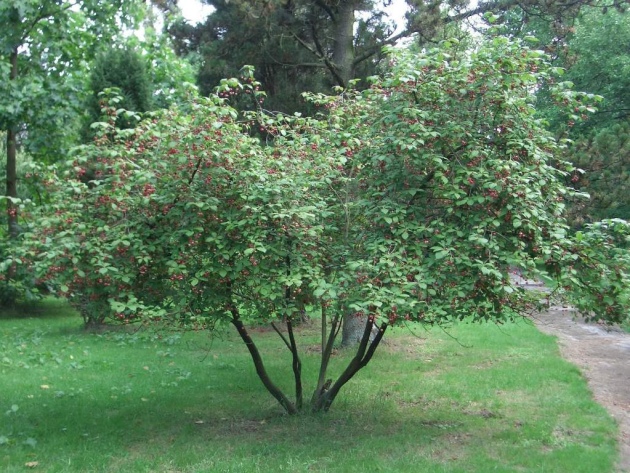
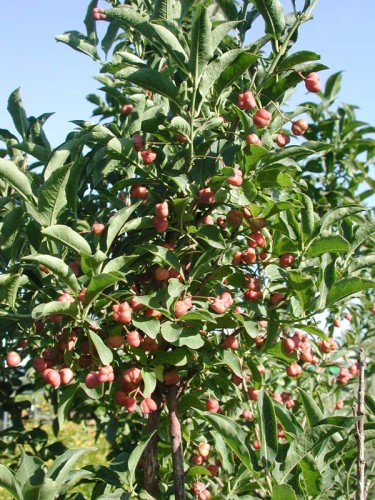
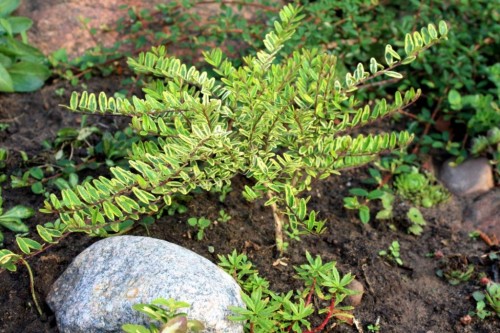
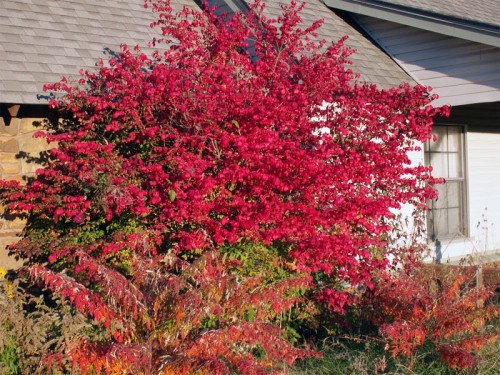

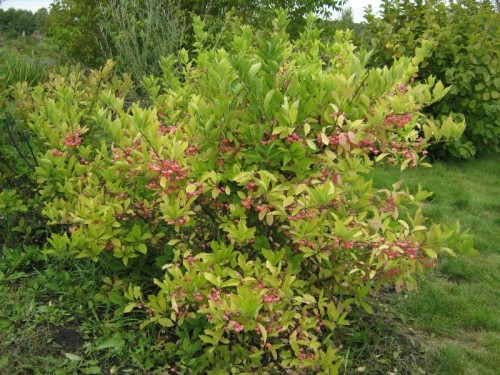
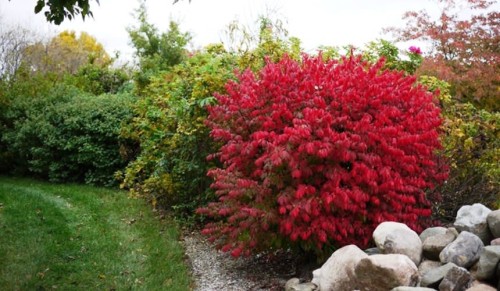
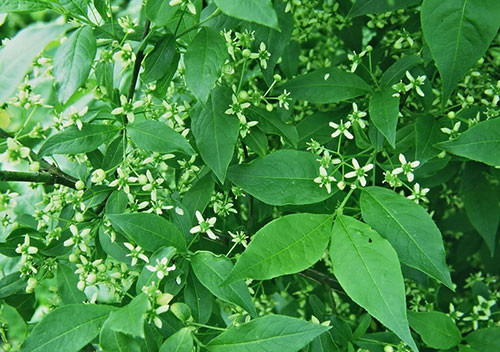
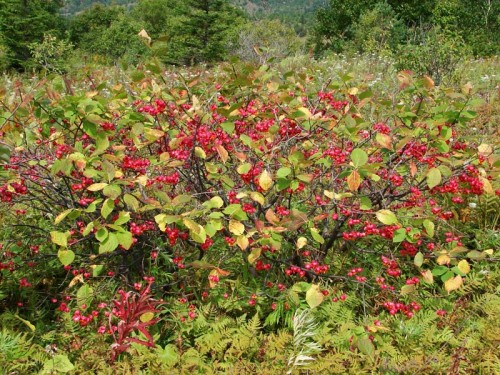
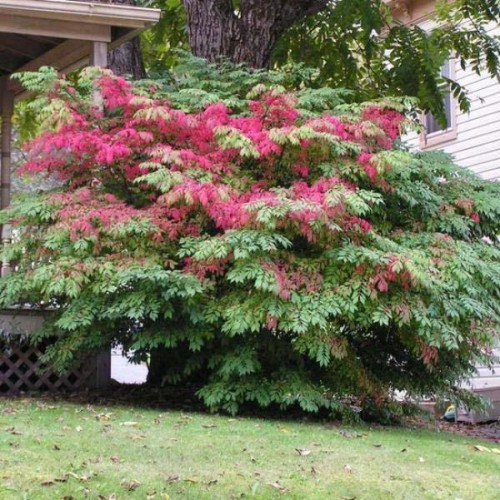












 Start a discussion ...
Start a discussion ...